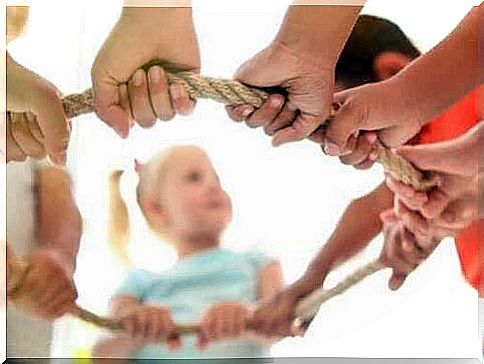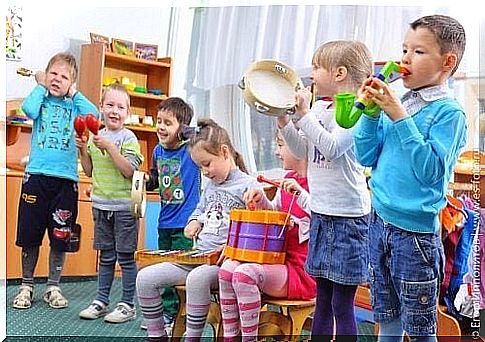Benefits Of Collaborative Play

Do you know the benefits of collaborative play for children? This type of cooperative play activity seeks teamwork to achieve the same goal, instead of enhancing competition. In this way, in the end, you only win or lose together.
The collaborative play
Collaborative or cooperative play is intended to be an alternative to competitive play with playful proposals that develop in a relaxed and friendly environment. In them, all children would be able to participate without giving rise to exclusion or discrimination. Therefore, each would bring their abilities.
Thanks to these features, the benefits of collaborative play for children are many. Both in the short term, to make room for a constructive educational environment, and in the long term, to enhance positive social interaction attitudes.
5 Benefits of Collaborative Play for Children
1. Awareness, respect and solidarity

First, collaborative play is based on the principles of respect and solidarity. In this way, it is intended to instill awareness in a playful way, in order to fight against the discrimination that is so common nowadays. This can also be a strategy to prevent bullying.
Some schools are already adopting these types of techniques that invite children to feel empathy for their peers. In this way, they can put themselves in the other’s shoes and evaluate options for solving challenges together.
2. Cooperation and teamwork
The collaborative game integrates all participants and invites them to help each other. In fact, to solve the game it is essential to find a way to work as a team. In no case would they be able to win individually as in most games, as they all face an external element together.
In this way, children learn to value each other’s special abilities and add them up. In this sense, for example, if a child does well with math but not with sport, he will not be excluded for not winning a race, but will be assigned another task related to numbers.
3. Collaborative play also promotes communication

To solve the tests or challenges that the game presents, it will also be essential to establish good communication. In this way, all children will enhance their ability to express themselves and express their opinion.
At the same time, they will all learn to listen to their peers. With this strategy, we seek to balance those children who do not speak with others who maintain a constant conversation. Thus, an equal opportunity is sought between them.
4. Conflict resolution in collaborative play
Due to play, children still do not know that they are learning to resolve conflicts. What can you do when we can’t solve a problem on our own? How can we ask for help? How can we collaborate?
The first step is to learn to express the need to resolve the conflict. In this way, they prove the effectiveness of this strategy and then transport it to other situations in the room or at break time. In the same way, they will learn to take it to the family environment and, when they are adults, to the work environment.
5. Self-esteem and self-confidence

Finally, collaborative play reinforces each child’s self-esteem and self-confidence. Through this activity, they learn that they fulfill an essential role as part of the group in order to reach the goal. They can even discover their own talents that they didn’t know about thanks to the observation of their companions.
The collaborative game is, without a doubt, an ideal pedagogical tool to be used in the educational environment. Children are sponges that absorb everything they see. In this way, they will integrate in a very spontaneous and natural way all these values that are increasingly needed to protect.









